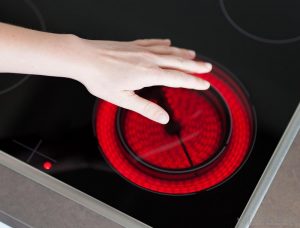
Individuals can have a similar instinctive reaction when they are burned by the market. When the market is highly volatile they’re gut reaction may be to pull their hand away quickly and easing the pain by selling and getting out.
It would seem almost malapropos to keep a hand on the hot stove knowing that doing so will result in further pain and injury. And it would be unthinkable to place the other hand on the stove so both are feeling the heat.
Naturally, no one likes to lose money. When markets go down it is perfectly understandable for individuals to not want to subject themselves to further loss and the pain of seeing account values decline. However, for many individuals, especially those with long time horizons, it can be perfectly sane to keep their hand on the stove (invested in the market). Perhaps a bold few will have the audacity to put both hands on the stove (invest more money when markets are down).
Some individuals may want to consider a lukewarm approach by having multiple burners going, yet set to different settings (diversification). This way, when one burner is really hot (say, stocks are plummeting) they can place their hands on a different burner (a different, less-correlated asset such as bonds or REITs) and still stay close to the stove, without getting burned.